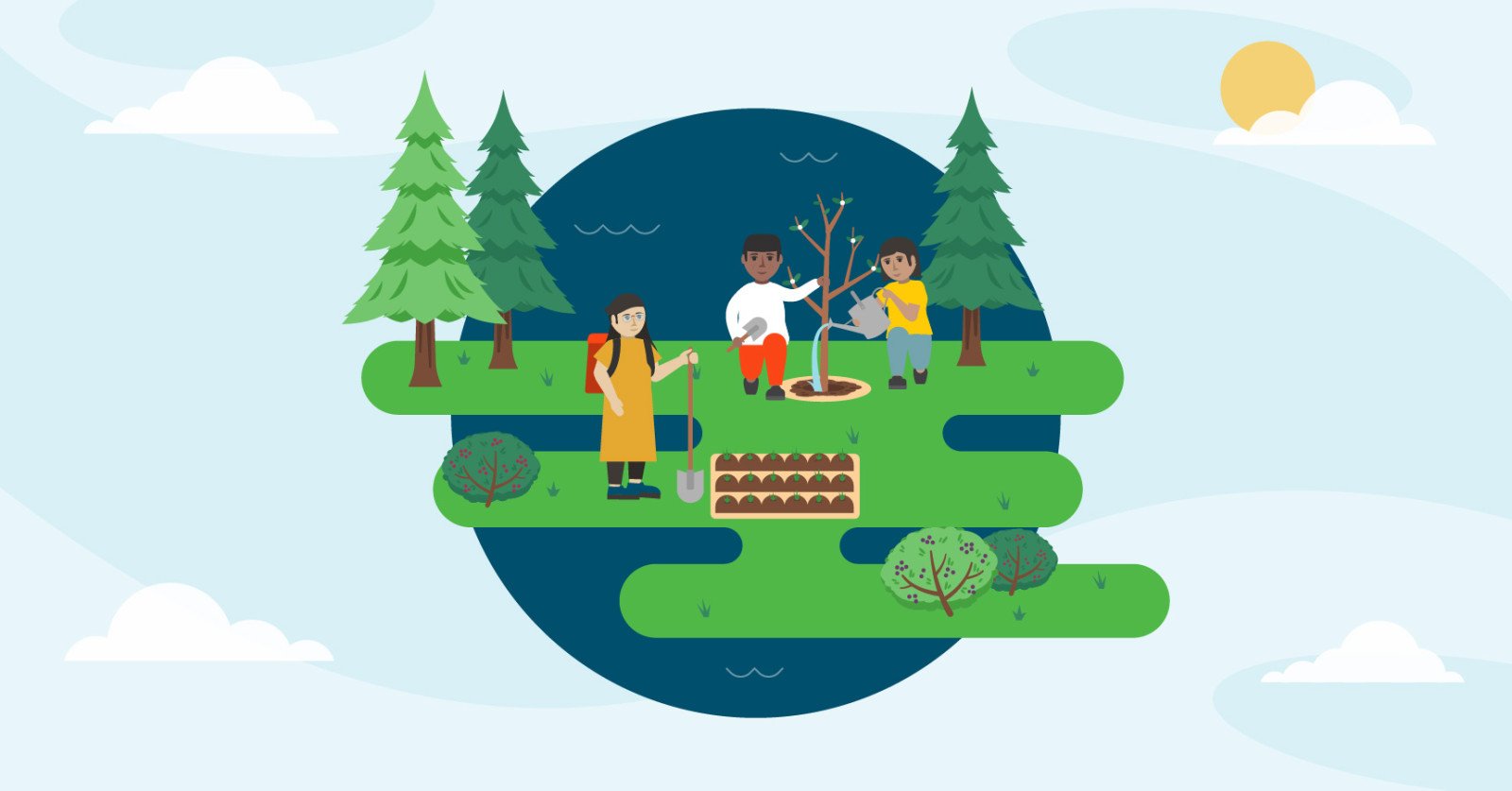Sustainable and equitable choices for all
Explore creative and equitable ways to make environmentally friendly choices through a game and environmental campaign.

Overview
Sometimes sustainability choices can feel unaffordable and inaccessible to all of us. In this activity, we explore how we can all make meaningful sustainability choices and take part in the solution. We will play a game to discover many affordable and equitable sustainability options and plan an environmental campaign.
Instructions
What you'll need
- “Sustainability challenge” slideshow game
- Digital projector and screen
- Optional: Individual whiteboards and markers, one per group of 4-5 students
- Paper, markers, and other tools
Sustainable choices for all
- Discuss how sometimes, sustainable choices seem very expensive and therefore not everyone is able to access them. Have students share examples like installing solar panels on your home, purchasing a new electric car, or choosing sustainable clothing. These choices are not accessible to everyone and can still create waste. Instead of spending more money, let’s explore ways of living in environmentally friendly ways, that are available to us all.
- Put students in teams of four to five students and ask them to name their team. On the classroom board create columns each with a team name.
- Pull up the “Sustainability challenge” slideshow game. This game will task teams to find creative and accessible solutions to sustainability challenges.
- At slide 2, share with students that you will present them with a challenge and their team will have two minutes to come up with a solution and present it to the class.
- Each solution will be awarded points based on the criteria outlined on slide 3. Ideally the goal is to meet all the criteria. The criteria can be written on the board so students can always see them.
- Is it expensive or free?
- Does it create less waste?
- Does it save energy or water?
- At slide 4, present the example which shows that whether or not someone can afford to change all of their lights to LEDs, energy can be saved by turning off unneeded lights. In this example solution 1 is awarded one point, and solution 2 is awarded three points.
- At slide 5, present challenge 1, set a timer for 2 minutes and have students explore solutions to the challenge that meet the criteria.
- Next, taking turns, one person from each team presents their group idea. Remind students that it should be quick and easy to understand. Alternatively, individual size whiteboards could be used for teams to write their solutions and hold them up. Count the points for each team and record the results on the board.
- At slide 6, present challenge 2 and continue the game to challenge 5 on slide 9.
- At slide 10, ask students to reflect on their solutions; what could be used in their lives and homes, and how they could share those ideas with their families.
52 ways to invest in our planet
- Working in small teams or pairs, ask students to brainstorm ideas for an environmental campaign with simple and equitable actions. Ideas could include planning a lights-out, litterless lunch, a community or school clean-up, a pledge to eat more plant-based meals or meatless Mondays.
- Next, students put their ideas into action. Have student get creative and design posters for their campaign, write and perform skits for other classes, create videos to share, or come up with other ways to promote their campaign to the school or even to the wider community, such as writing to the local newspaper about their campaign.
Modify or extend this activity
- Explore the connection to food choices and climate change with the activity "Greenhouse: True or false?"
Curriculum Fit
Core competencies:
Communications and collaboration
- Connect and engage with others (to share and develop ideas)
- Working collectively
Thinking
- Creative thinking: creating and innovating
- Critical thinking: designing and developing
Social awareness and responsibility
- Contributing to community and caring for the environment
The activities could also connect to a variety of grade-specific curricular competencies and content in a variety of subjects including Applied Design, Skills and Technologies, Arts Education, Physical and Health Education, and Social Studies.
Assessments
- Assess students’ cooperation and creativity, working in groups, to find sustainability solutions.
- Assess students’ ability to articulate ideas for how sustainability can and should be equitable.
- Assess students’ understanding of the importance of protecting the Earth and actions we can take.
Teaching Notes
Sustainability and equity
Many people around the world want to live sustainable lifestyles, but feel it is unaffordable and so not available for everyone. To explore more details about why people do or do not make sustainable choices, check out this study, Shifting sands: Are consumers still embracing sustainability?
Young people can take action
Young people can act at school, in their community and at home to protect and care for the planet. We can empower them with a deeper understanding of our responsibility to take care of the planet we depend on, using simple and affordable actions.
BC Hydro’s and affordable electricity
In B.C., we are powered by water. We have the cleanest generation in Western North America and amongst the lowest greenhouse gas emissions of any utility in North America. As B.C. transitions to electrification and a low carbon future, BC Hydro is committed to keeping rates affordable, especially for lower-income families. Affordable electricity rates not only help British Columbians, they help ensure the price of electricity remains competitive with other forms of energy, supporting the transition away from fossil fuels to clean electricity in our homes and buildings, vehicles and businesses. Check out Recommendations from BC Hydro review to keep electricity affordable.






